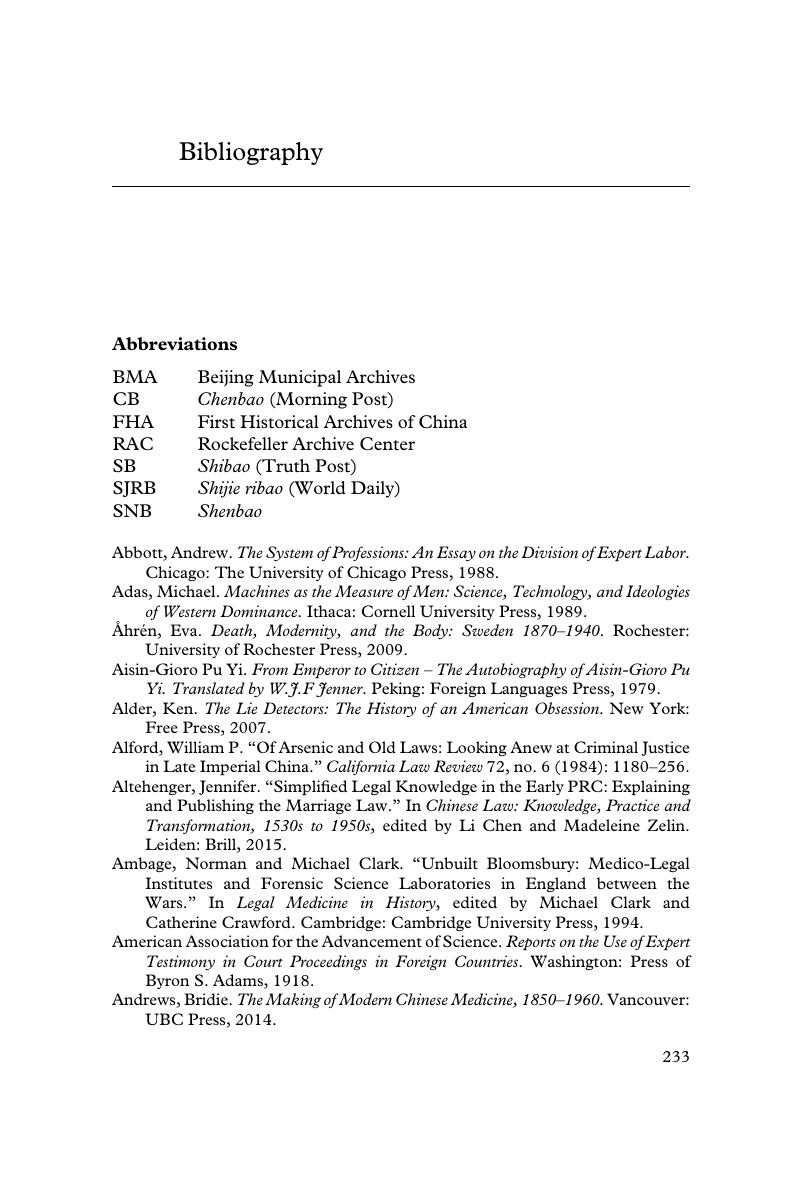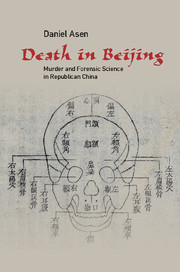Book contents
- Death in Beijing
- Science in History
- Death in Beijing
- Copyright page
- Contents
- Figures
- Book part
- Introduction
- 1 Suspicious Deaths and City Life in Republican Beijing
- 2 On the Case with the Beijing Procuracy
- 3 Disputed Forensics and Skeletal Remains
- 4 Publicity, Professionals, and the Cause of Forensic Reform
- 5 Professional Politics of a Crime Scene
- 6 Dissection and Its Discontents
- 7 Legal Medicine during the Nanjing Decade
- Conclusion: A History of Forensic Modernity
- Glossary
- Bibliography
- Index
- References
Bibliography
Published online by Cambridge University Press: 05 July 2016
- Death in Beijing
- Science in History
- Death in Beijing
- Copyright page
- Contents
- Figures
- Book part
- Introduction
- 1 Suspicious Deaths and City Life in Republican Beijing
- 2 On the Case with the Beijing Procuracy
- 3 Disputed Forensics and Skeletal Remains
- 4 Publicity, Professionals, and the Cause of Forensic Reform
- 5 Professional Politics of a Crime Scene
- 6 Dissection and Its Discontents
- 7 Legal Medicine during the Nanjing Decade
- Conclusion: A History of Forensic Modernity
- Glossary
- Bibliography
- Index
- References
Summary

- Type
- Chapter
- Information
- Death in BeijingMurder and Forensic Science in Republican China, pp. 233 - 250Publisher: Cambridge University PressPrint publication year: 2016



